Linux Chmod Directory And All Files

Linux It S Me Tommy

Solved B To Remove Myfile Ordinary File From The Paren Chegg Com

Linux Users Permissions And Management Programmer Sought

Linux Unix Permissions And Attributes Linuxsecrets

How To Change Directory Permissions In Linux Pluralsight
Q Tbn 3aand9gct I9jvgnhaxowmpzpaajfkfizchmnvqt Bi Nz3ljrxwqpkb8l Usqp Cau
Chmod -R MODE DIRECTORY.

Linux chmod directory and all files. For example, to set the sticky bit, prefix a 1 to the number sequence:. Permission is divided into three categories Read – This permission when granted allows user to open and read contents of files. How do I chmod 655 to all files under dir1 and all subdir?.
Relatedly, to chmod all directories you can use find. Set the permissions of file.htm to "owner can read and write;. In Linux / Unix systems, accessibility to files and directories is determined by file ownership and permissions.
This will change permissions for all files/folders in the current directory, but not the contents of the folders. In this, the 9 characters from 2nd to 10th position represents the permissions for the 3 types of users. The chmod command allows you to change the permissions of files using symbolic or numeric mode.
$ sudo chmod <specify the file permissions> <specify the file/directory name>. These should be 644, as they often do not need to be executable.Hence, you could do find /path/to/directory -type d -exec chmod 755 {} \;. Well, in WS_FTP Pro (classic edition), I can select all the files in a directory, and CHMOD them, but I'll have to do that 75 times (once for each directory).
Lets have some fun with File Permissions and we will mention other things later in the post. Find /opt/lampp/htdocs -type d -exec chmod 755 {} \;. The format of the command is chmod XXX -R directory-location.
Use chmod to set additional file system modes for files and directories. /root# chmod o-rwx * .* This supposed to remove read, write and execute permissions for the world on all files in the current directory (/root).As soon as I did this, screen behaved weird, I couldn't run commands as a non-root user, and ssh refused to work unless I logged in with root. Following is a sample of ls -l command output.
Here we have the commands that anybody can use on the Linux system. Chmod -R permission directory Therefore, to set the 755 permission for all files in the Example directory, you would type:. You might consider using rw access for files and not enabling the executable bit.
In a previous article, we looked at how to manage file & directory ownership using the chown command. The chmod command allows a user to change the permissions of a file/directory. In this tutorial, we look at the chmod.
All you need to do for that is simply add the keyword sudo before executing this command. The general syntax to recursively change the file’s permissions is as follows:. I was trying to think of a way that I could do it in telnet with one command.
Examples chmod 644 file.htm. Below is the command's general structure:. Find ./mydir -type d -exec chmod 755 {} \;.
To use chmod, the user must be the owner of the file. To change the permissions — or access mode — of a file, use the chmod command in a terminal. Chmod a=r foldername to give only read permission for everyone.
User can read, write, and execute;. Column:5 The size of the directory/file in k,M,G. Chmod all files to 644 and all folders to 755 of a directory NixPal > Guides > Tutorials > Apache > Chmod all files to 644 and all folders to 755 of a directory January 22, 15 NixPal Chris Apache , Centos / RHEL , Debian , Fedora , FreeBSD , Security , Tutorials , Ubuntu Leave a comment 2.
It will apply rw-r-r permissions to all files and folders in the specified location. Read and execute rights, if they existed, have been removed from all files and directories for Others inside /local/project-a. The command that executes such tasks is the chmod command.
Chmod -R u=rwx /local/project-a. If we want to ensure that the Owner has rwx rights to all files and directories, we could run the following:. Enable the 'other' bits for the directories and files.
Let's look at the command for gzip, a file compression utility for Linux. How to Set File Permissions Using `chmod' Files and directories in Unix may have three types of permissions:. Sudo chmod -R 755 Example.
Linux systems use the chmod command to modify the permission of files or folders. As all Linux users, you will at some point need to modify the permission settings of a file/directory. Iam trying to start with directory and here is my code in the file totalchange.sh (insideragain - is a directory, test1.txt - is a file under the directory insideragain) totalchange.sh file.
Sudo chmod XXX -R directory-location. By - Linux tutorial - team. Recursively (-R) Change the permissions of the directory myfiles, and all folders and files it contains, to mode 755:.
Basic Syntax of CHMOD Recursive. Chmod is a great Linux command for manipulating file and directory permissions. However… You don't usually want to 755 all files;.
Chmod never changes the permissions of symbolic links (or external links), because, on a z/OS system, the permissions on symbolic links (and external links) are never used. Read (`r'), write (`w'), and execute (`x'). The basic syntax of the chmod command is shown below:.
To recursively operate on all files and directories under a given directory, use the chmod command with the -R, (--recursive) option. So all files will have 655 permission and all dir will remain as they were. This option change files and directories permissions recursively.
Chmod -R rwxrwxrwx path-of-the-directory. Use chmod -R 755 /opt/lampp/htdocs if you want to change permissions of all files and directories at once. Find /var/www/my_website -type f -exec chmod u=rw,go=r {} \;.
Chmod stands for change mode, which changes the file or directory mode bits. In this tutorial, we will show you how to change file permissions recursively with chmod and find command in Linux. Find /path/to/location -type d -print0 |xargs -0 chmod 755;.
Let's take a look at some other examples. Chmod permission file_name There are two ways to define permission:. The find command will search for files and directories under /var/www/my_website and pass each found file and directory to the chmod command to set the permissions.
To check directory/file exists and then change the permission of the directories/files. We have the root folder for our website at /etc/apache2/htdocs We chmodded that folder and all sub-directories with all the commands that you posted on here and seemed to work. Group can read only;.
Im a newbie with this Linux stuff but our Novell webserver crashed (hard drive) and thought to put Novells version (SUSE 10.0) instead. An interesting place to look at different kinds of file permissions is the /bin directory. Hi, OS - Unix, linux (all unix flavors) My requirement.
The basic syntax is:. The command gives read, write, and execute privileges to the owner ( 7) and read and execute access to everyone else ( 55 ). Linux dropfolder where users can't delete files.
-type d -exec chmod 755 {}. The permissions control the actions that can be performed on the file or directory. The chmod command only allows you to change the permission of files and directories that you own.
Chmod is a GNU utility which is provided as part of coreutils rpm in Linux distributions chmod is short abbreviation for " Change Mode " It is used to change the file mode bits of each given file/directory according to mode. Click below button to copy the code. You can configure who can read, write or execute the file.
You can set the umask values in /etc/profile or in ~/.bashrc. Definitive permission to. Change permission on all the files in a directory recursively chmod has the recursive option that allows you to change the permissions on all the files in a directory and its sub-directories.
Column:6 Last Modification date of the file Column:7 Name of the File/Directory. Chmod Modifies File Permissions. This tutorial will explain you how to change different-2 permissions for files and directories recursively.
All followed by the file or folder name. Chmod -R o+rwx <target directory> This command will give all users full access. One set for the owner of the file, another set for the members of the file’s group, and a final set for everyone else.
The default umask value is subtracted from the overall file/directory default value. Chmod a+r filename #everyone can now read chmod a+rw filename #everyone can now read and write chmod o-rwx filename #others (not the owner, not in the same group of the file) cannot read, write or execute the file. Here are some examples:.
Using the symbolic method:. Normally it has the following possibilities, full rights to the owner, rights for owner Group, and rights for other users. Linux - Solution 1:.
Chmod 1755 participants With a sticky bit, only the file owner, the directory owner, or the root superuser can delete the file, regardless of the file's read-and-write group permissions. Chmod command is used to change access permission of files and directories in Linux operating systems.chmod stands for change mode.Access permissions specify whether a user account or group can read, write, or execute a given file and directory. To put it simply, use chmod command to change the file or directory permissions.
Apply chmod 644 to all files only (excluding directory). Chmod is command line utility for changing permissions of files and directories under Linux/Unix operating system. How to Change Groups of Files and Directories in Linux.
The file or directory owner;. You can use the find command. In Linux, you may face permission problems while installing software packages, exploring directories, reading/writing files.
Chmod command in Linux is used to change or assign permissions on files and directories. Chmod -R 755 myfiles. Change Permissions of a File or Folder.
If the number of files you are using is very large. Chmod -R 644 /path/to/location. To change all the directories to 755 (drwxr-xr-x):.
You can either use symbolic representation of changes or an octal number representing the bit pattern for the new mode bits. In case you need to change the permission of files and directories that you don’t own, you will need to use sudo. Others can read only".
Use find /opt/lampp/htdocs -type d -exec chmod 755 {} \;. Next, execute the command for directories only:. In Linux, who can do what to a file or directory is controlled through sets of permissions.
As you might remember, the default file permission value is 0644, and the default directory’s is 0755. You could also do chown -R username:groupname ., which would change the permissions on the current directory, and then recurse down inside of it and all subfolders. Chmod -R 755 will set this as permissions to all files and folders in the tree.
Find /var/www/my_website -type d -exec chmod u=rwx,go=rx {} \;. You want to use chown username:groupname *, and let the shell expand the * to the contents of the current directory. Set permission in Linux using chmod:.
First, apply file system permissions to files and folder by running chmod in recursive mode:. How do I change the mode in Linux?. Apply chmod 755 to directory and sub-directories only (excluding files).
Group members and other users can read and execute, but cannot write. Each permission may be `on' or `off' for each of three categories of users:. Write – When write permission for a file is granted to user, he can modify contents of file.
Chmod ugo+rwx foldername to give read, write, and execute to everyone. Chmod is a command in Linux and other Unix-like operating systems that allows to change the permissions (or access mode) of a file or directory. You might also require to run this command as sudo user.
Chmod -R 755 directory chmod 777:. Using symbols (alphanumerical characters) using the octal notation method. (Recursively) will cause all files and directories within (underneath) the file/directory whose permissions are being changed to take those permissions.
For each path name operand that names a directory, chmod will change the file mode bits of the directory and all files in the file hierarchy under it. To change directory permissions for everyone, use “u” for users, “g” for group, “o” for others, and “ugo” or “a” (for all). You can also simply navigate to the folder (Using cd command) where you want to.
There may also a concern about security that permissions specify what a particular user may or may not do changes to a particular file and directory. To only change directory permissions. There are three sets of permissions.
Yesterday I did something stupid which I today realised. Other people in the same group as the owner;. Please refer to the manual (man chmod):-R, --recursive change files and directories recursively chmod -R 755 /path/to/directory would perform what you want.
In Linux and Unix based systems access to all files and directories are controlled by file permission. Column:4 Group to which file/directory belongs, all users in the group will have the mentioned permission.

How To Change Permissions Chmod Of A File Hostgator Support
Your Own Linux Chmod Basics Of Files Directories Permissions And Use Of Chmod

How To Chown Recursively On Linux Devconnected

How To Use Chown Command For Beginners Lintut

Solved Users Permissions 1 Review The Adduser And Chmo Chegg Com

Delete Remove A Directory Linux Command Nixcraft

A Complete Guide To Chmod Recursive Force And More

Chmod Wikipedia

Chmod Change Mode Permissions

Understanding File Permissions

44 File Permissions Chown Chgrp Chmod Umask Dong A Place To Track My Time Log

Linux Permissions Guide Plex Support

How To Change Directory Permissions In Linux Pluralsight

Linux Permissions Guide Plex Support

Chmod Recursive Change Permissions Recursively On Files Folders

Chmod 777 755 655 644 And More Permissions Linux Files Tutorials

Linux File Permission Change By Chmod Command In Linux Guide For Beginners
/i7guGwCYcn-34e068e148ae4e918b29c86cd2d5740e.png)
Configuring Unix Linux File And Directory Access Rights

How To Set File And Directory Permission In Linux Using Chmod
Q Tbn 3aand9gcs Trmaopb41lzfo2wl Mi6olorurkywaddbudhnw Ne1mor3ct Usqp Cau

Unix Linux Os X File Permissions
Q Tbn 3aand9gcs J72hjomdluhqe6xjivy M6yrjmkqx9x3z3ps Rpnb8by3w7z Usqp Cau

Directories Showing Up In Green Executable Even After Removing Execute Permission For All Unix Linux Stack Exchange

Linux Users And Groups Linode

Changing Linux Files Directory Permissions Dba Genesis Support

14 Permission And Modification Times

Linux Chmod Command Utility Software Computer File

Linux Permissions Guide Plex Support

How To Use The Chmod Command On Linux

How To Use Chmod And Chown Command Nixcraft
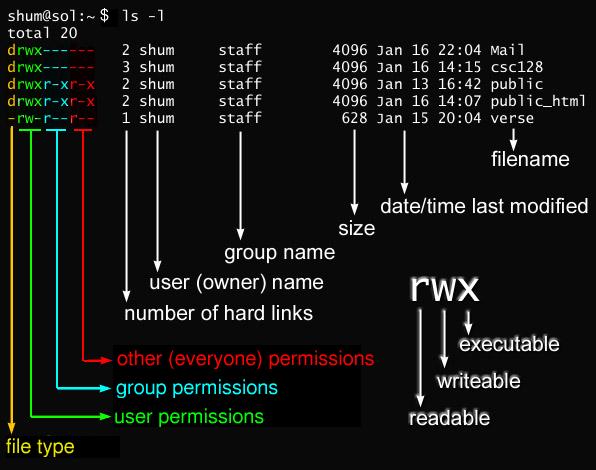
Javarevisited 10 Example Of Chmod Command In Unix Linux

9 Linux Change Owner And Group Owner Of File And Directory In Linux Using Chown Youtube

How Can I Recursively Change The Permissions Of Files And Directories Ask Ubuntu

Unix File Permissions Computer Science

Xampp Htdocs Permission Issue And Fix In Ubuntu

Write Access Chmod 644

Give Write Access Chmod Command

Chown Command In Linux With Examples Geeksforgeeks

Chmod All Files To 644 All Folders To 755 Of A Directory Nixpal

How To Set File Permissions In Mac Os X Macinstruct

Linux Chmod Command Tutorial With Examples To Change Permission Of Files And Folders Poftut

Linux Permissions An Introduction To Chmod Enable Sysadmin

Chmod Recursive Change Permissions Recursively On Files Folders

Linux Chmod Command Help And Examples

What Is Chmod 777 How To Change File Permissions For Linux Tech Ninja Pro

How To Change Permissions And Owners Via Linux Command Line

Linux File Permissions And Chmod Doug Vitale Tech Blog

Change File Permissions Recursively Linux Linux Hint

How To Change File Permissions Recursively With Chmod In Linux

Use Of Chmod Command In Linux Devopsdex

Understanding Basic File Permissions And Ownership In Linux The Geek Diary
Q Tbn 3aand9gcsuqrd7yr237u Am8msiqf70j96klzxefjagdqqwjyc32uhwnrw Usqp Cau
How To Create A Read Only File In Your Home Directory In Unix Quora

Lesson 9 Setting And Using Permissions Overview Describing File Permissions Using Execute Permissions With A File Changing File Permissions Using Mnemonics Ppt Download

Change Ownership And Rights To Files And Folders In Linux Smashing Lab
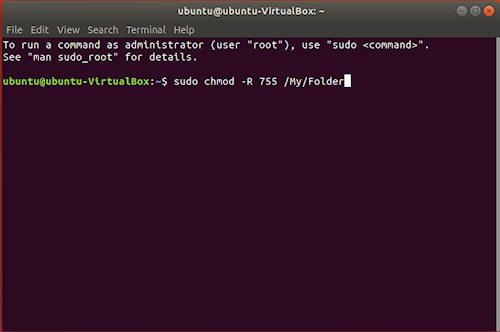
Introduction To Linux File Permissions Attributes Chmod Globo Tech
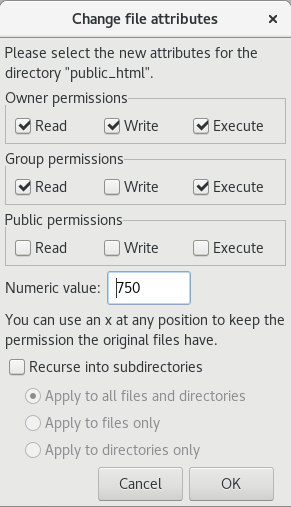
Change Permissions Of Files And Folders In Filezilla In Your Linux Hosting

9 Quick Chmod Command Examples In Linux

How To Use The Linux Chown Command Tutorials

How To Assign The Correct Permissions To My Prestashop Files And Folders Rolige

Chmod 777 755 655 644 And More Permissions Linux Files Tutorials
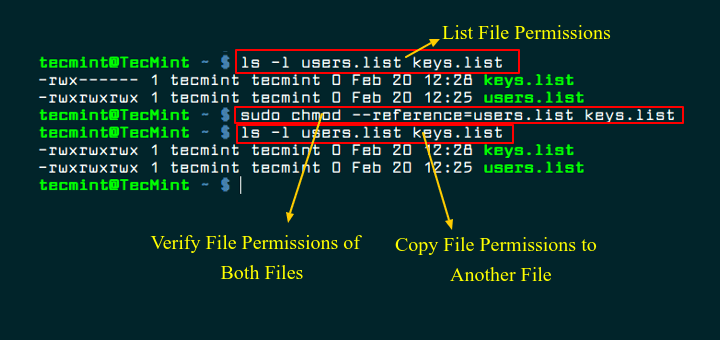
How To Copy File Permissions And Ownership To Another File In Linux

How To Recursively Change The File S Permissions In Linux Linuxize

Quick Answer How To Use Chmod In Linux Os Today

Chmod 777 In Terminal The Command To Make All Changes Affect Every File And Folder Ask Ubuntu

Unix Linux Command Reference

Directory How Can I Change Permissions Of A Folder Including Its Enclosed Files And Subdirectories Ask Ubuntu

Changing File Permissions Wordpress Org

File Permissions In Linux Programmer Sought

How To Change Permissions Folder And All Its Subfolders And Files In Linux

Change Permissions Of Files And Folders In Filezilla In Your Linux Hosting

Chmod Chown Wsl Improvements Windows Command Line

How To Change Directory Permissions In Linux Pluralsight

How To Copy Files Using The Install Command On Linux

Understanding File Permissions And Access Rights In Linux Linux Stall

Chown Command In Linux With Examples Geeksforgeeks
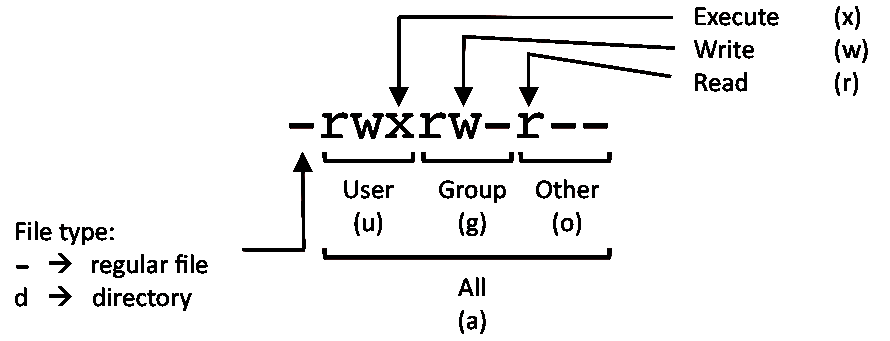
Linux Commands Cheat Sheet Linux Training Academy

Permissions In Linux Geeksforgeeks

Setting File And Directory Permissions Computational And Information Systems Laboratory

Linux Permissions Guide Plex Support

Linux File Permissions Tutorial How To View And Change Permission

Chmod Chown Wsl Improvements Windows Command Line

Agenda The Linux File System Chapter 4 In Text Ppt Download

Linux Jessica Peng

How To Use The Chmod Command On Linux

Learning The Shell Lesson 9 Permissions

What Is Chmod How To Use Chmod For Wordpress File Permissions
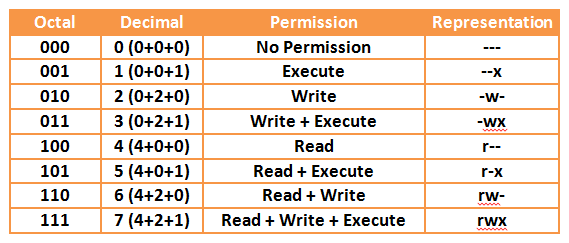
Your Own Linux Chmod Basics Of Files Directories Permissions And Use Of Chmod

How To Change File Permissions Recursively With Chmod In Linux

44 File Permissions Chown Chgrp Chmod Umask Dong A Place To Track My Time Log

Linux Chown Command Tutorial For Beginners 12 Examples

Chmod Recursive Change Permissions Recursively On Files Folders
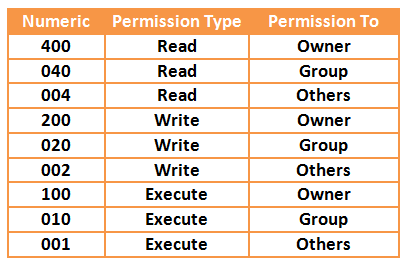
Your Own Linux Chmod Basics Of Files Directories Permissions And Use Of Chmod

Linux Chmod Example Linux Hint

Chmod Why It Matters User Permissions In Os X Droppedframe Com

Chmod Command In Linux With Examples Geeksforgeeks

Chmod Cheatsheet Linux

Modify File Permissions With Chmod Linode



